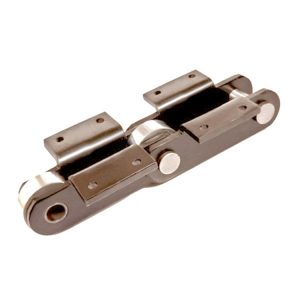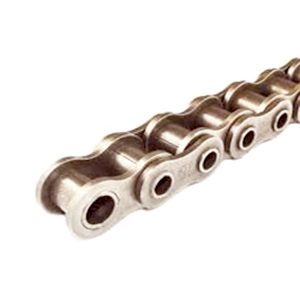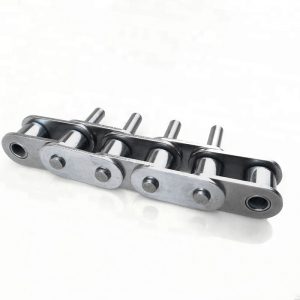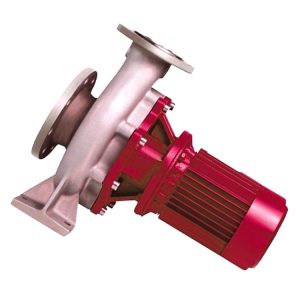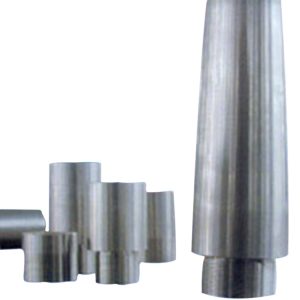Product Description
Company Profile
HangZhou Doerbee International Trade Co. , Ltd. , located in HangZhou hi-tech Development Zone, ZheJiang Province, the company’s main auto parts, mechanical and electrical supplies. Our company has established long-term and stable cooperative relations with many auto parts factories in ZHangZhoug and ZheJiang provinces. We value credit, abide by contracts, guarantee product quality, win the trust of our customers, and make every effort to follow their needs, continuous product innovation and service improvement. OEM, sample can be customized. We will gradually improve the product types and details, if you have non-standard products need us to help you find Chinese manufacturers, please contact us, send samples, we will be your most responsible and professional partner in China. Looking CHINAMFG to working with you.
Every month, we will go back and forth to each auto parts manufacturer to find and compare all kinds of high quality and low price products for you. If you have samples, but can not confirm the model or name, you can also send samples to us, we will try our best to find out the sample manufacturers in China, compare the quality for you, and provide quotation. We represent all kinds of auto parts and mechanical and electrical products, in the future we will continue to improve the product category, please pay attention to us, any need, please feel free to contact us. At present, there are more than 300 types of overrunning clutch pulley , only 30 types on the shelf for reference. Please send us the type of pulley you need. We’ll be at your service.
| original number | original number | Generator number | Applicable Models | |||
| OD1 | 61 | 33310 | 920065 | |||
| OD2 | 54 | 1006533 | ||||
| W | 36.4 | 513B15716 | ||||
| R | 5 | 12638803 | ||||
| ID | 17 | 13513070 | ||||
| M | M16 | 13587308 | ||||
| Clock | CW | 13587311 | ||||
| 23506937 | ||||||
| 23508626 | ||||||
| 5257143 | ||||||
| 52145717 | ||||||
| 95519904 | ||||||
| 1257169 |
Q1. How to buy?
A1:Large quantity for more discount : Inquiry → Quotation → Price resonable → Check with specification → Proforma Invoice sent → Payment made → Product shipment → Customer
Q2. What is your terms of payment?
A2:T/T 30% as deposit, and 70% before delivery. We’ll show you the photos of the products and packages before you pay the balance.
Q3. How about your delivery time?
A3:Generally, it will take 20 to 40 days after receiving your advance payment. The specific delivery time depends on the items and the quantity of your order.
Q4. Can you produce according to the samples?
A4:Yes, we can produce by your samples or technical drawings.
Q5. What is your sample policy?
A5:We can supply the sample if we have ready parts in stock, but the customers have to pay the sample and courier cost.
Q6. Do you test all your goods before delivery?
A6:Yes, We will take 100% testing and photos before delivery, and keep communication with you at any time.
Q7: How do you make our business long-term and good relationship?
A7:We are not only partners, but also friends. We will try our best to provide you with the most cost-effective products. If you have any goods that are difficult to purchase, we will try our best to find them in China. We will become your most trusted buyers in China.
/* January 22, 2571 19:08:37 */!function(){function s(e,r){var a,o={};try{e&&e.split(“,”).forEach(function(e,t){e&&(a=e.match(/(.*?):(.*)$/))&&1
| After-sales Service: | 100000 Km |
|---|---|
| Warranty: | 2 Years |
| Type: | Auto Clutch Bearing |
| Material: | Carbon Steel |
| Tolerance: | P5 |
| Certification: | TS16949 |
| Samples: |
US$ 8/Piece
1 Piece(Min.Order) | |
|---|
| Customization: |
Available
| Customized Request |
|---|
What are the common problems and maintenance requirements for pulleys?
Pulleys, like any mechanical component, can experience common problems and require regular maintenance to ensure their proper functioning and longevity. Here are some of the common problems and maintenance requirements for pulleys:
1. Wear and Tear: Over time, pulleys can experience wear and tear due to friction, load stress, and environmental factors. This can result in issues such as worn grooves, cracked or deformed pulley bodies, or damaged bearings. Regular inspection is necessary to identify signs of wear and address them promptly.
2. Misalignment: Pulleys can become misaligned, causing the belt or rope to run off its intended path. This can lead to inefficient power transmission, increased wear on the belt, and reduced overall system performance. Regular alignment checks and adjustments are necessary to ensure proper alignment of pulleys and belts.
3. Belt Tension: Proper belt tension is crucial for optimal pulley performance. Over time, belts can stretch or become loose, resulting in inadequate tension. Insufficient tension can cause slippage, reduced power transfer, and premature wear. Regular checks and adjustments of belt tension are necessary to maintain optimal performance.
4. Contamination: Pulleys can accumulate dirt, dust, debris, or other contaminants, particularly in industrial or outdoor environments. Contamination can lead to increased friction, reduced efficiency, and accelerated wear. Regular cleaning of pulleys is necessary to prevent buildup and maintain smooth operation.
5. Lubrication: Pulleys with bearings require proper lubrication to minimize friction and ensure smooth rotation. Insufficient lubrication can lead to increased friction, heat generation, and premature bearing failure. Regular lubrication according to manufacturer recommendations is essential for optimal pulley performance and longevity.
6. Bearing Maintenance: Pulleys with bearings should undergo regular bearing maintenance. This includes inspecting bearings for signs of wear or damage, cleaning them, and replacing worn-out or faulty bearings. Proper bearing maintenance helps prevent bearing failure, which can lead to pulley malfunction or system downtime.
7. Environmental Factors: Pulleys used in outdoor or harsh environments may be exposed to adverse conditions such as extreme temperatures, moisture, chemicals, or corrosive substances. Extra care should be taken to protect pulleys from these environmental factors. This may involve using appropriate seals, covers, or coatings and implementing preventive measures to mitigate the effects of the environment.
8. Regular Inspections: Regular inspections are crucial for identifying potential problems early on. Inspect pulleys for signs of wear, damage, misalignment, or other issues. Address any identified problems promptly to prevent further damage or system failure.
9. Replacement of Worn-out Parts: If any components of the pulley, such as the belt, bearings, or fasteners, are worn out or damaged beyond repair, they should be replaced promptly. Using worn-out parts can compromise the performance and safety of the pulley system.
10. Manufacturer Guidelines: Follow the manufacturer’s guidelines and recommendations for maintenance and servicing of pulleys. Manufacturers often provide specific instructions on maintenance intervals, lubrication requirements, and other important considerations.
By proactively addressing these common problems and adhering to regular maintenance requirements, pulley performance and service life can be optimized, ensuring smooth and reliable operation in various applications.
Can pulleys be used for both horizontal and vertical lifting?
Yes, pulleys can be used for both horizontal and vertical lifting. The versatility of pulley systems allows them to be utilized in various lifting applications, regardless of the direction of the load. Here’s how pulleys can be used for horizontal and vertical lifting:
1. Horizontal Lifting: In horizontal lifting scenarios, pulleys can be employed to change the direction of the force applied to the load. By using a combination of fixed and movable pulleys, the force can be redirected to pull the load horizontally. This is commonly seen in applications such as manual hoists or block and tackle systems used in construction, where heavy objects need to be moved horizontally across distances.
2. Vertical Lifting: Pulleys are widely used in vertical lifting applications, such as cranes, elevators, and lifting systems. In these setups, the pulleys are typically arranged in such a way that the load can be lifted vertically. By using multiple pulleys and ropes or cables, mechanical advantage can be achieved, making lifting heavier loads easier. The pulleys distribute the load’s weight across multiple lines, reducing the effort required to lift the load.
It’s worth noting that the number and arrangement of pulleys can vary depending on the specific lifting requirements. For example, a single fixed pulley can change the direction of the force but does not provide any mechanical advantage. On the other hand, systems with multiple pulleys, such as compound pulley systems or block and tackle setups, can provide significant mechanical advantage, making lifting heavier loads more manageable.
Whether it is horizontal or vertical lifting, the principles of pulley mechanics remain the same. Pulleys allow for force redirection, mechanical advantage, and load distribution, making lifting tasks more efficient and manageable. The specific configuration and setup of the pulley system will depend on the lifting requirements and the desired level of mechanical advantage.
Can pulleys be customized for specific applications?
Yes, pulleys can be customized to meet the specific requirements of various applications. Customization allows pulleys to be tailored to specific sizes, shapes, materials, and performance characteristics. Here’s a detailed explanation of how pulleys can be customized:
1. Size and Shape: Pulleys can be customized in terms of their size and shape to fit the specific space and layout constraints of the application. This includes variations in diameter, width, groove configuration, and overall design. Custom sizes and shapes ensure optimal fit and compatibility within the system, allowing for efficient and effective load distribution and lifting.
2. Materials: Pulleys can be customized based on the materials used for their construction. Different materials offer varying properties such as strength, durability, weight, and resistance to corrosion or wear. By selecting the appropriate materials, pulleys can be customized to withstand the specific operating conditions of the application, including temperature, humidity, and exposure to chemicals or harsh environments.
3. Bearing Systems: The bearing system of a pulley can be customized to suit the requirements of the application. Different bearing types, such as ball bearings or roller bearings, can be selected based on factors like load capacity, rotational speed, and desired friction characteristics. Customizing the bearing system ensures smooth rotation, reduced friction, and improved overall performance of the pulley.
4. Coatings and Surface Treatments: Pulleys can be customized with various coatings and surface treatments for enhanced performance. For example, pulleys used in applications that involve high temperatures may benefit from heat-resistant coatings. Pulleys used in environments with corrosive substances can be coated with protective materials to prevent corrosion. Surface treatments such as polishing or plating can also be applied to reduce friction, improve wear resistance, or provide specific surface properties.
5. Load Capacity and Performance: Pulleys can be customized to accommodate specific load capacities and performance requirements. This includes determining the number of pulleys in a system, selecting the appropriate pulley ratios, and configuring the pulley arrangement to achieve the desired mechanical advantage. Customization allows pulleys to be optimized for the specific load requirements, ensuring efficient load distribution and lifting.
6. Integration with Systems: Pulleys can be customized to seamlessly integrate with existing systems or equipment. This involves designing pulleys with compatible interfaces, mounting options, and connection methods. Customization ensures proper alignment, easy installation, and smooth operation when incorporating pulleys into the overall system.
7. Specialty Applications: In certain specialized applications, pulleys can be customized to meet unique requirements. This may include designing pulleys for extreme operating conditions, such as high speeds or heavy loads, or developing pulleys with specific features like built-in sensors or locking mechanisms. Customization allows pulleys to be tailored to the specific needs of niche applications.
Customization of pulleys is typically carried out by manufacturers or suppliers who have the expertise and capabilities to design and produce pulleys according to specific customer requirements. This allows for the optimization of pulley performance, compatibility, and efficiency in a wide range of applications.
editor by CX
2024-04-12











